Where does Reggie Bush rank among USC's all-time Heisman Trophy winners?
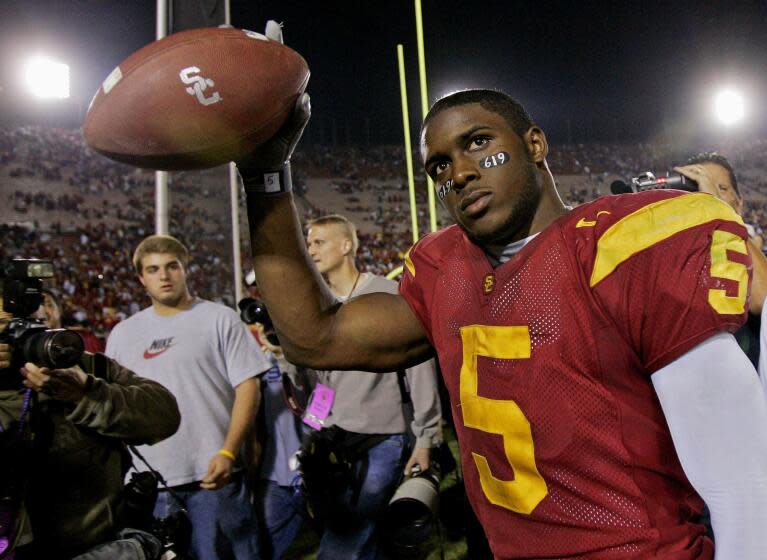
Now that Reggie Bush and his Heisman Trophy have officially reunited — pushing USC to a record eight winners — it might be time to renew an old debate.
Among all the Trojans who have hoisted the famed bronze statuette, who was the best?
Statistics and records tell only part of the story. Award-winning seasons are made of a peculiar blend, what the Heisman Trust refers to as “great ability combined with diligence, perseverance and hard work.” It doesn’t hurt to finish the season with a few spectacular moments that catch the voters’ attention.
Given this somewhat vague criteria, here is our list. Let the arguing begin.
Reggie Bush 2005
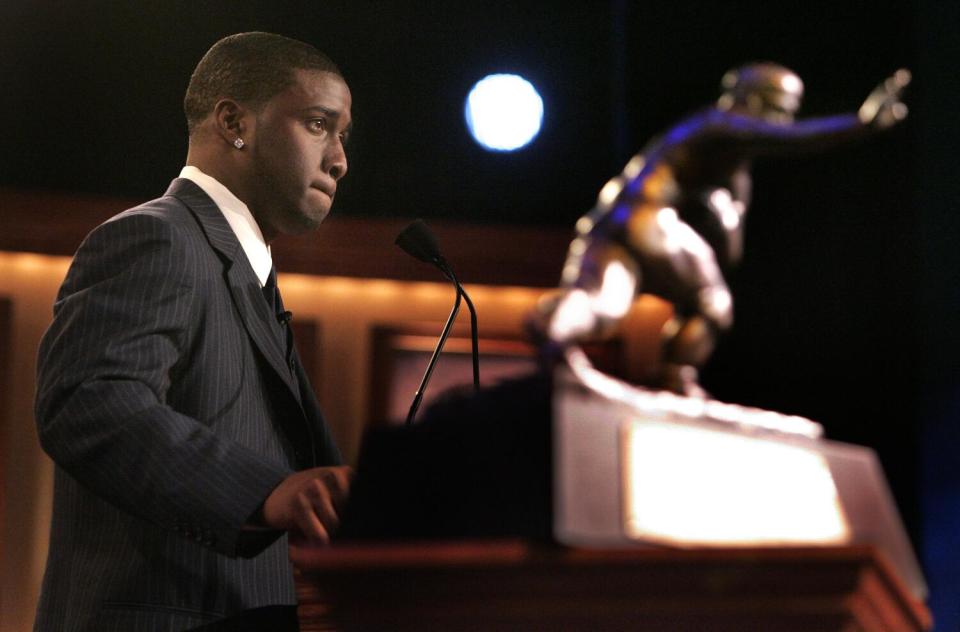
Pure physicality nudges Bush to the top spot. No USC player can match his highlight-reel career.
The punt returns against Washington, Washington State and Oregon State. The freeze-frame juke against Fresno State. For good measure, add the “Bush Push,” when he shoved quarterback Matt Leinart across the goal line to beat Notre Dame and, eventually, prompt officials to change the rules.
Bush had a knack for making big plays when it mattered most. The Trojans lost only two games and finished atop the AP Poll twice in his three years at tailback.
“Even if you think you have him,” Washington State linebacker Pat Bennett said, “he can give you a little juke and he’s gone.”
Marcus Allen 1981
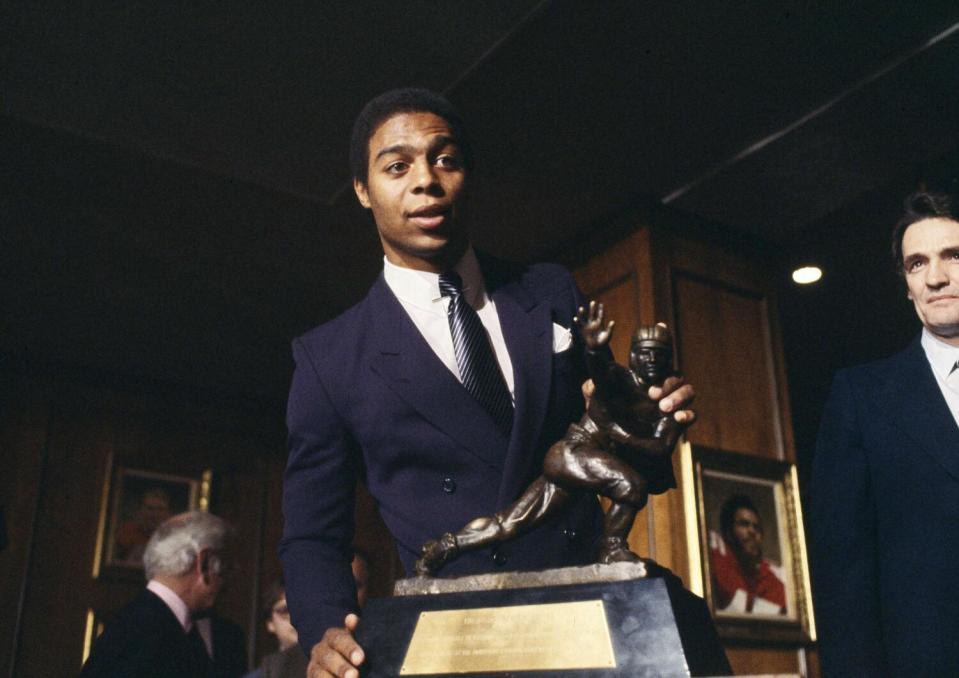
The 1981 winner had to wait a while, recruited by USC as a defensive back, switching to the offensive backfield, then playing fullback while he waited two seasons for Charles White, another Heisman winner, to graduate. That pretty much checks the box for the Heisman’s “perseverance” criterion.
As a senior, Allen made up for lost time by becoming college football’s first 2,000-yard rusher, setting or tying 16 NCAA records and leading the team in receptions, all of which overshadowed the Trojans’ shaky finish that season. As for special moments, consider his eight games of 200 yards or more. After one of those performances, then-Tennessee coach Johnny Majors said: “He picks holes as well as any back I’ve seen in my coaching career.”
O.J. Simpson 1968
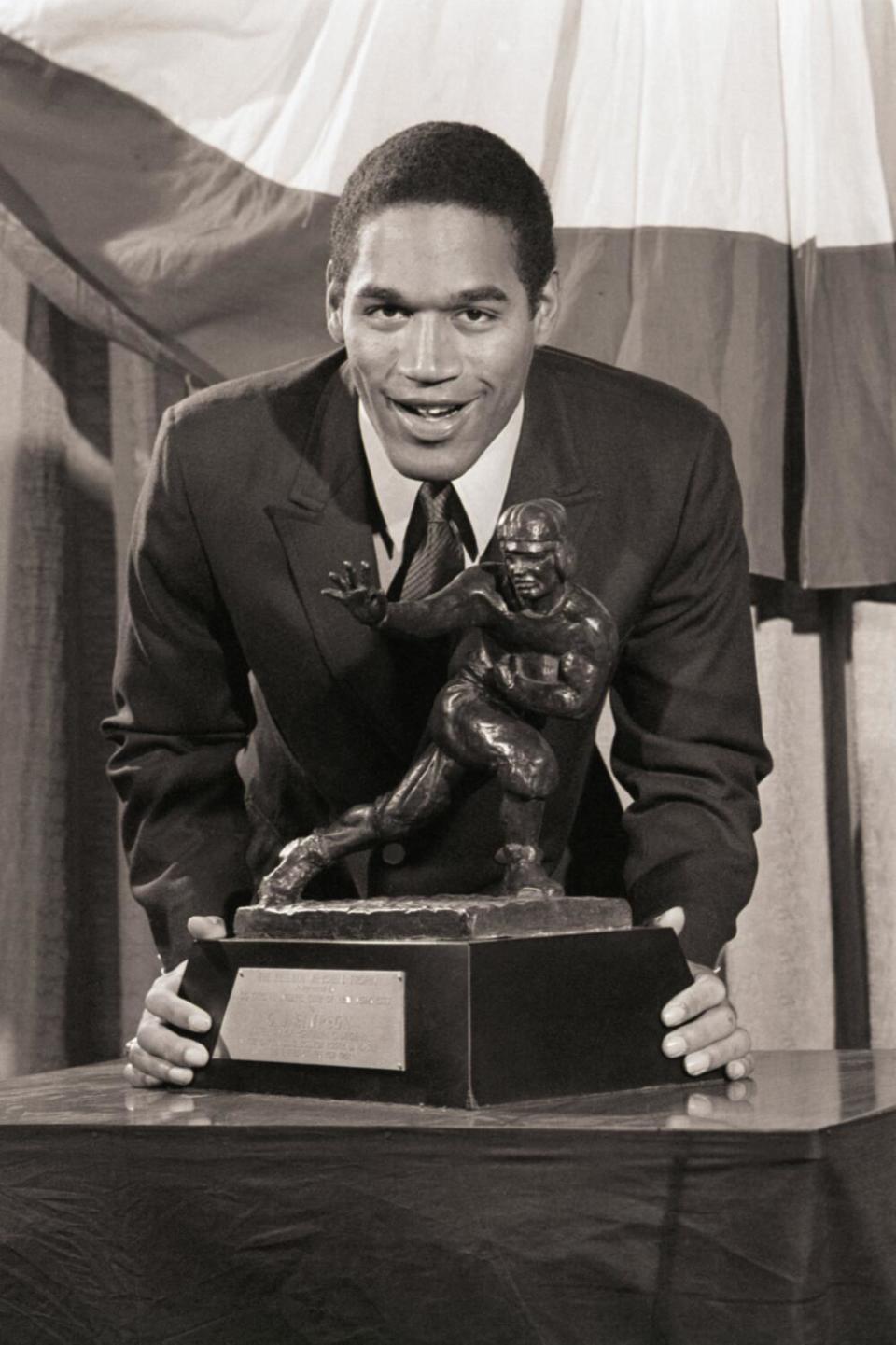
This one is highly problematic, but given that Simpson still appears on the winner’s list, playing college ball long before the murder trial and the imprisonment for robbery and kidnapping, we proceed.
Arriving at USC from City College of San Francisco, Simpson almost won as a junior in 1967, finishing second to UCLA’s Gary Beban. The momentum from his zigzagging, 64-yard touchdown run against the Bruins that season — it still ranks among college football’s greatest plays — carried him into next fall when he rushed for 1,880 yards and 23 touchdowns. His Heisman victory ranks among the most one-sided votes in the award’s long history.
Charles White 1979
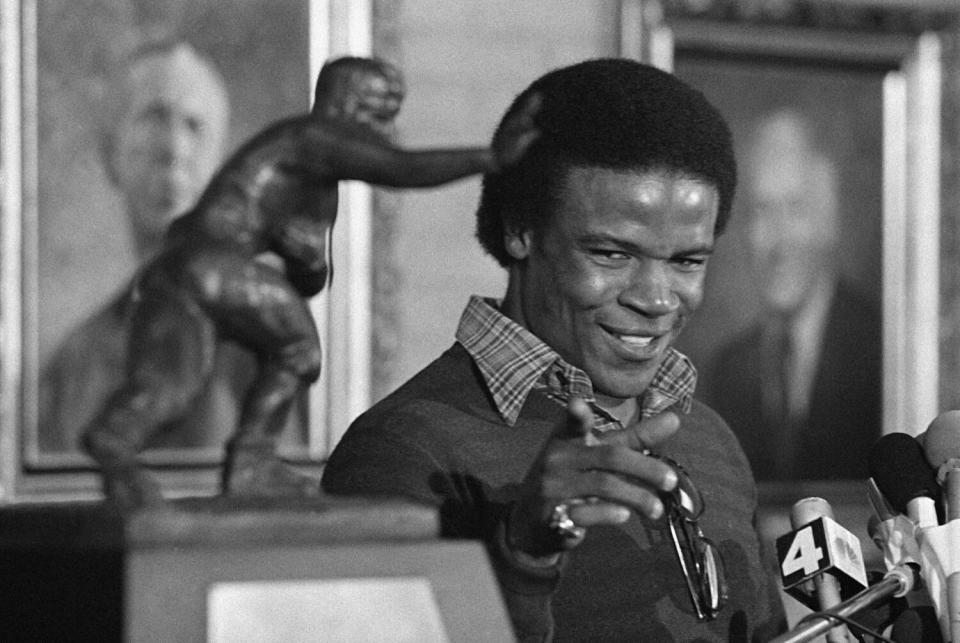
A month after White won the Heisman, the Trojans faced Ohio State in the 1980 Rose Bowl. Their star tailback was weakened by the flu and had blood flowing from a cut nose but refused to leave the game, carrying six times for 71 yards on the game-winning touchdown drive. “He could go and go and go,” quarterback Paul McDonald said. “Take a shot, get hammered and come back for more.”
That kind of grit exemplified what coach John Robinson called the “nasty, aggressive” runner who broke into the lineup as a freshman, led USC to three Rose Bowl victories and, in his final season, had four 200-yard games to finish comfortably ahead in the voting over returning Heisman-winner Billy Sims of Oklahoma.
Read more: Plaschke: Why has USC forgotten Charles White? Haunted Heisman winner hopes relationship heals
Caleb Williams 2022
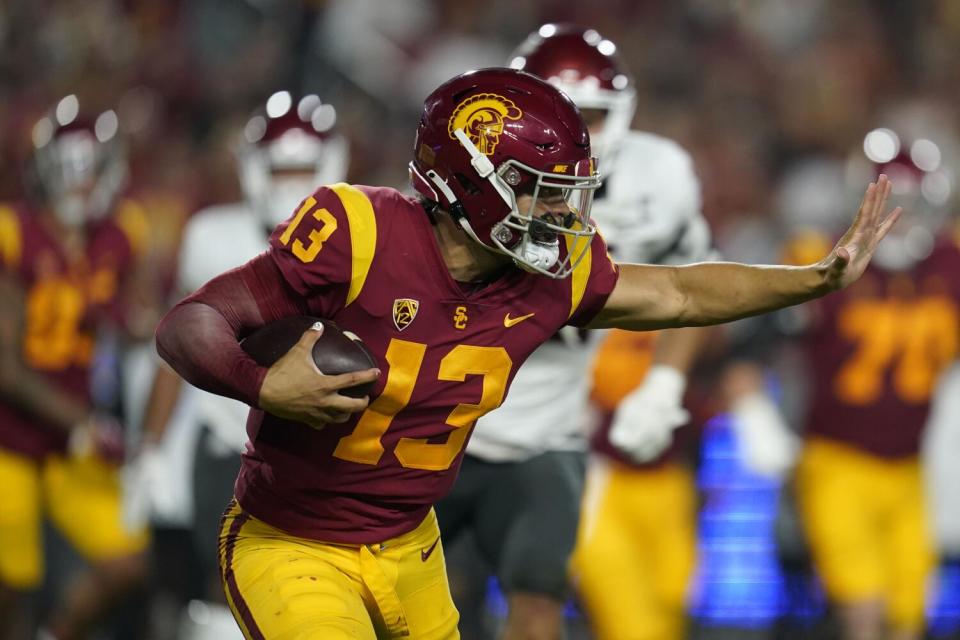
Williams earned this ranking for the number of times he spun out of a tackler’s grasp when his offensive line faltered, the games when he kept the Trojans within striking distance despite a porous defense. He was crucial in transforming a downtrodden program into a top-10 team.
When people talk about a “Heisman moment,” they need to look no farther than his performances in victories against UCLA and Notre Dame.
Read more: 'I'm just trying to be real to me.' Heisman finalist Caleb Williams comes into his own
Mike Garrett 1965
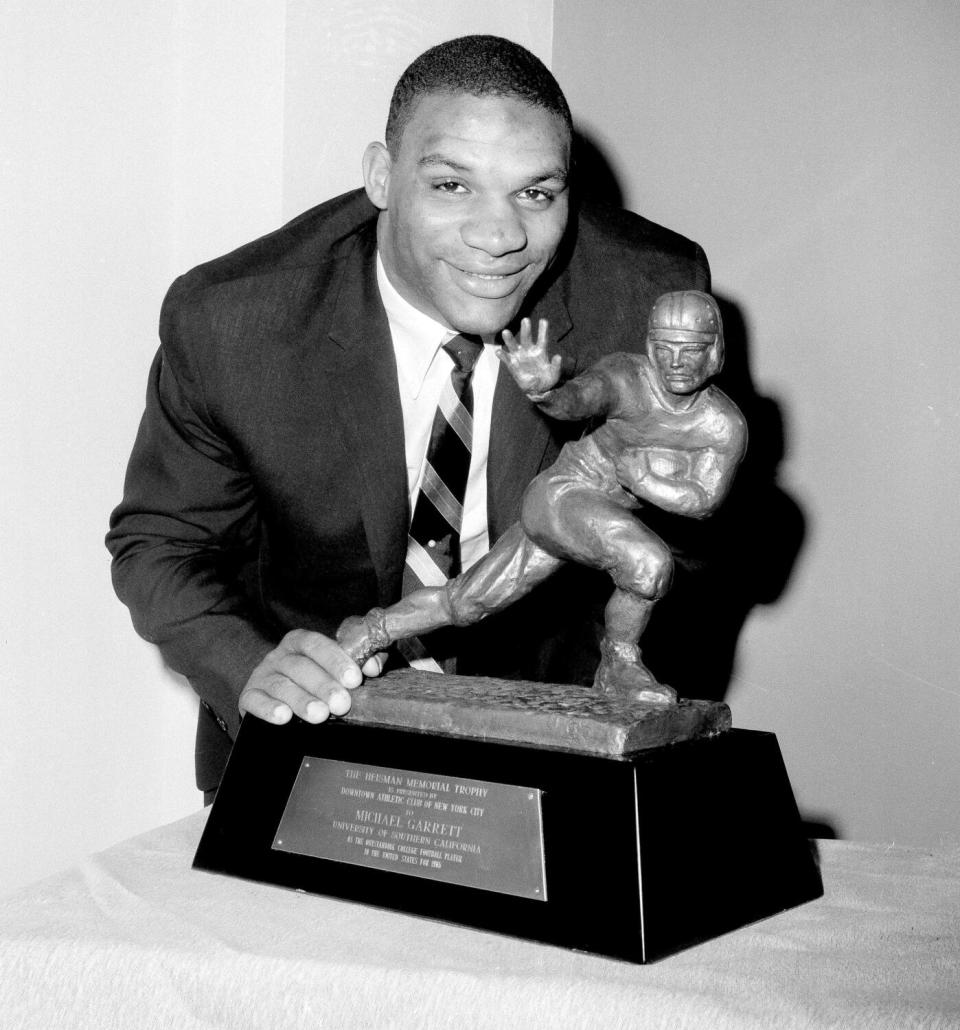
This was the player who started it all, the one who put the tailback in “Tailback U.” Fans might forget that he was headed to UCLA before then-USC coach John McKay offered him a scholarship at the last minute.
The Roosevelt High graduate’s tenacity and strength were perfectly suited to the power offense that McKay wanted to install. A workhorse runner — he would later serve as athletic director — Garrett bulled his way to 1,440 yards and 13 touchdowns as a senior and became only the second West Coast player to win the Heisman Trophy.
Read more: A Small Man, a Big Tradition : 25 Years Ago, Mike Garrett Got the Ball Rolling at USC
Matt Leinart 2004
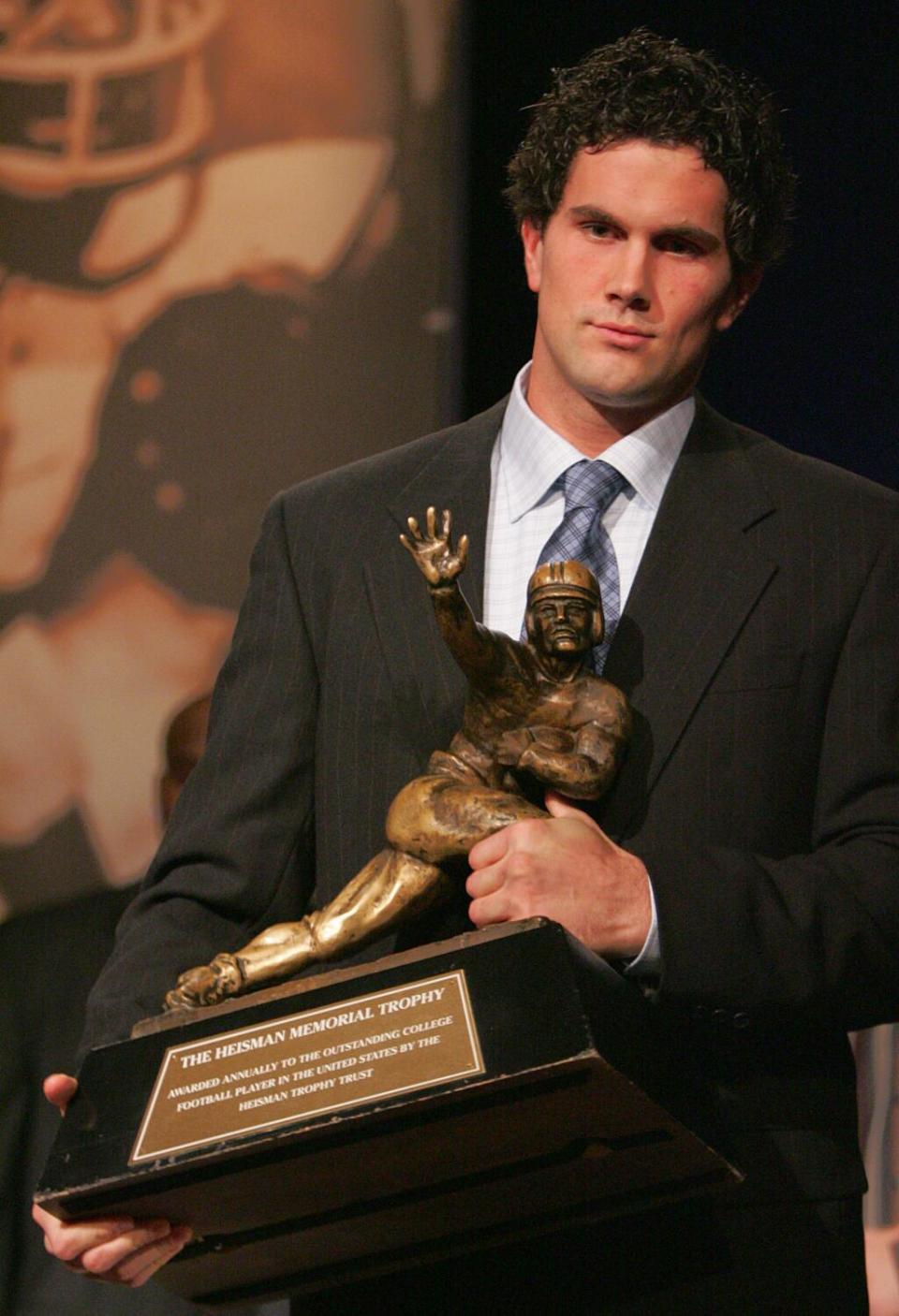
Like Allen before him, Leinart had to wait for a shot at stardom, playing behind Carson Palmer and barely winning a training camp competition for the starting spot as a redshirt sophomore in 2003. His arm wasn’t particularly strong and he wasn’t blazing fast but, as then-Oregon State coach Mike Riley would later say, “he knows where to go with the football.”
Leinart earned the Heisman by passing for 33 touchdowns with only six interceptions as he led USC to a 13-0 record and a national championship in his junior season. In a surprise move, he returned as a senior and had another stellar season, finishing third in the voting behind his winning teammate, Bush.
Carson Palmer 2002
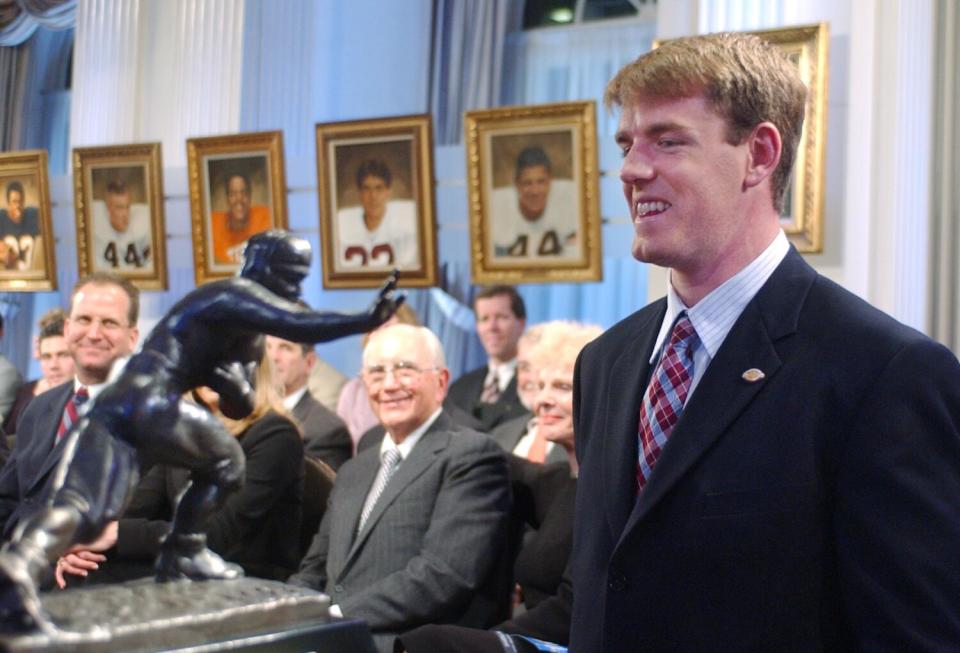
Dubbed the “Golden Boy” early in his career, Palmer won the starting job during his freshman season but had to endure a broken collarbone and plenty of losing games before breaking through.
If for nothing else, he deserves credit as the first Heisman quarterback at “Tailback U.” and the passer who helped revive USC under coach Pete Carroll. His final season included 3,942 passing yards, a “Heisman moment” against Notre Dame and a lopsided Orange Bowl victory that put the Trojans back in the national spotlight.
This story originally appeared in Los Angeles Times.

 Yahoo Sports
Yahoo Sports 